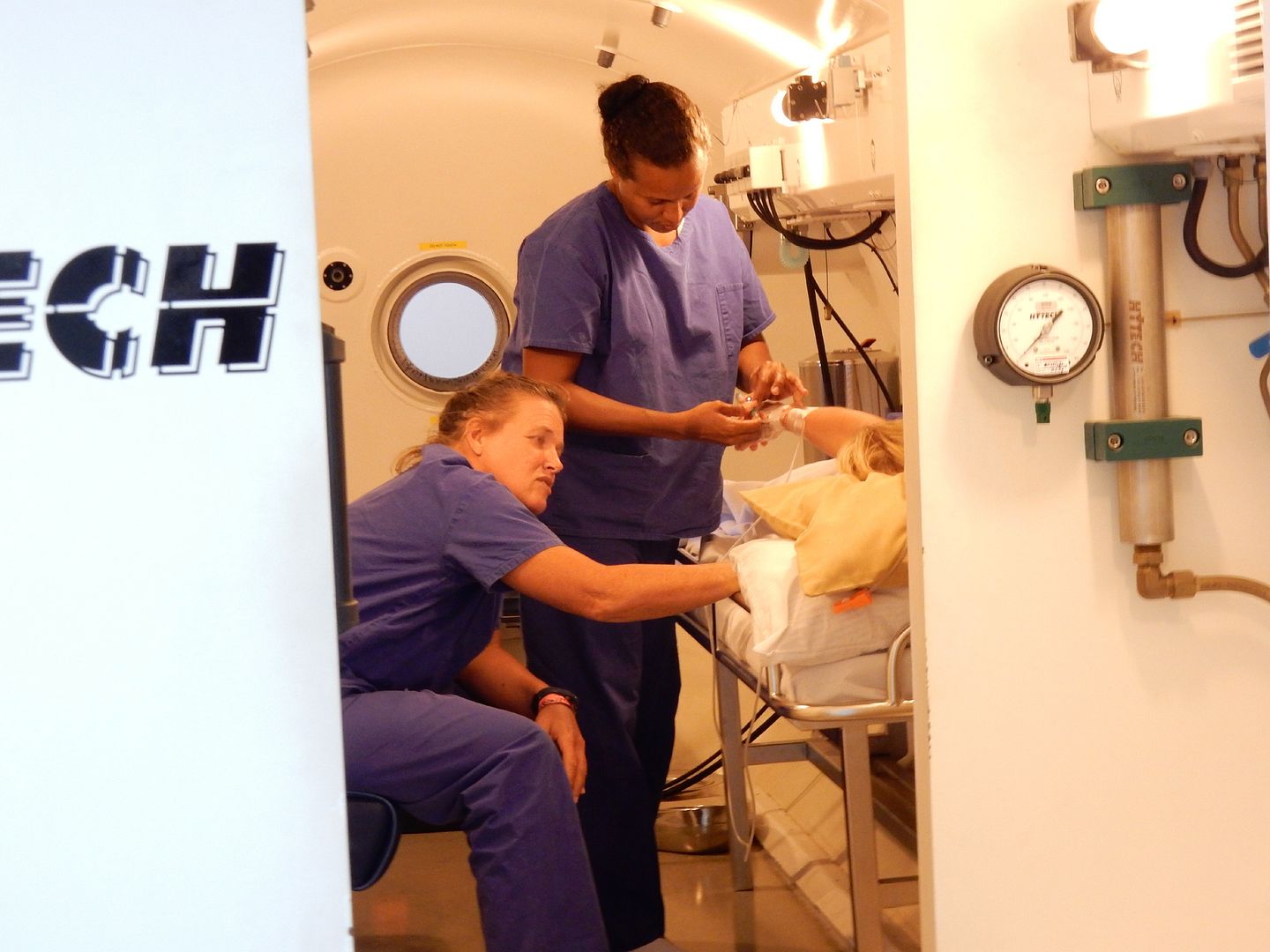So glad to hear that your wife will be okay, thank you for sharing your experience.
Once at the end of a dive off St. Lucia, we were doing our safety stops so I was in shallow water, right by the boat and next to my husband, and I was in no danger. I was just hanging there comfortably and looking at the fish under the boat.
Suddenly without any warning my mouth filled with sea water. I scrambled frantically and grabbed my husband's octopus and stuck it in my mouth. I didn't even think to go for my own octopus or even just pop up to the surface although both would have probably worked fine in the situation.
My husband was surprised and concerned and he stayed tight next to me until we were safely back on the boat. When we looked at my regulator we saw that the mouthpiece had split wide open and it was a minor problem and easy to replace. Perhaps I was holding it rather loosely in my mouth for it to suddenly fill with water, I don't know but happily I didn't inhale any water or start choking on sea water.
But I can tell you that even in that small incident and safe environment, it was terrifying to suddenly take in sea water instead of air. Running out of air had always been the big fear but finding water instead of air in your mouth is incredibly frightening.
Ever since then I am careful to keep my regulator firmly situated in my mouth and I secure my octopus in my chest area, not far below my chin so I can get at it quickly. I also try to stay near to my husband but that doesn't always work out! But you are right, 20 feet is much too far away because bad things can happen in a moment. I will do my best to stay close in the future, thanks for the reminder.
Once at the end of a dive off St. Lucia, we were doing our safety stops so I was in shallow water, right by the boat and next to my husband, and I was in no danger. I was just hanging there comfortably and looking at the fish under the boat.
Suddenly without any warning my mouth filled with sea water. I scrambled frantically and grabbed my husband's octopus and stuck it in my mouth. I didn't even think to go for my own octopus or even just pop up to the surface although both would have probably worked fine in the situation.
My husband was surprised and concerned and he stayed tight next to me until we were safely back on the boat. When we looked at my regulator we saw that the mouthpiece had split wide open and it was a minor problem and easy to replace. Perhaps I was holding it rather loosely in my mouth for it to suddenly fill with water, I don't know but happily I didn't inhale any water or start choking on sea water.
But I can tell you that even in that small incident and safe environment, it was terrifying to suddenly take in sea water instead of air. Running out of air had always been the big fear but finding water instead of air in your mouth is incredibly frightening.
Ever since then I am careful to keep my regulator firmly situated in my mouth and I secure my octopus in my chest area, not far below my chin so I can get at it quickly. I also try to stay near to my husband but that doesn't always work out! But you are right, 20 feet is much too far away because bad things can happen in a moment. I will do my best to stay close in the future, thanks for the reminder.
Last edited:





